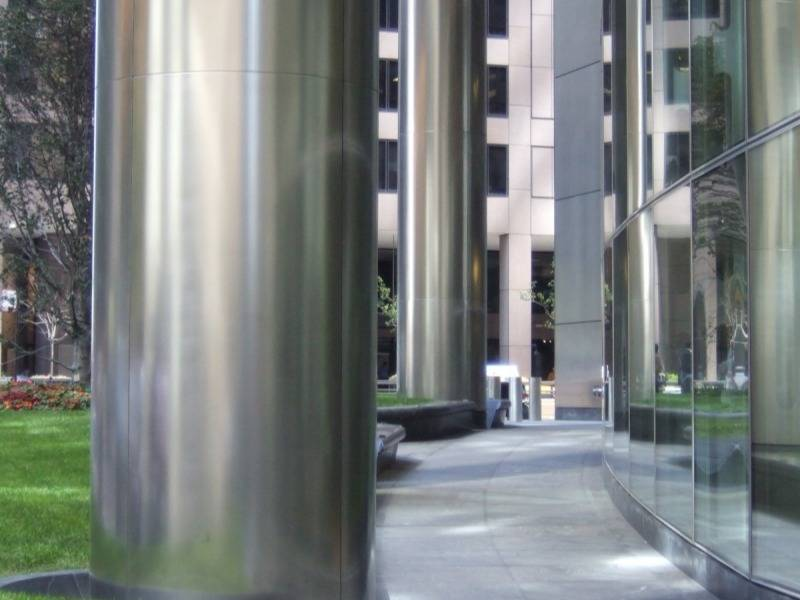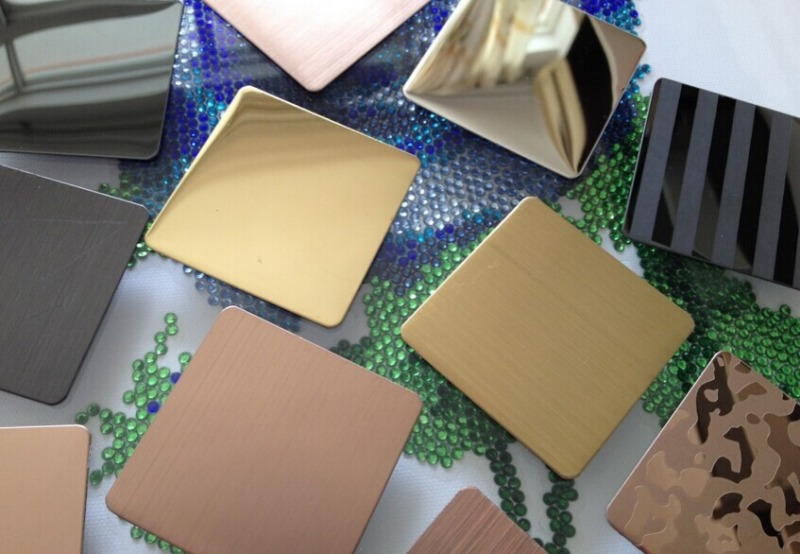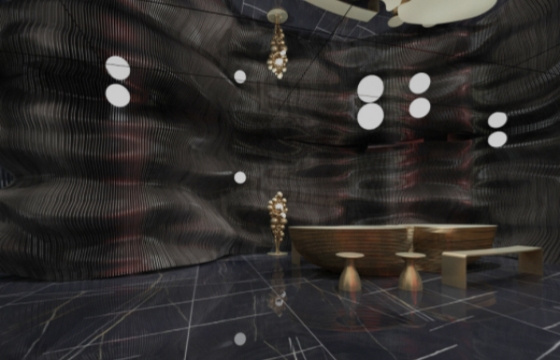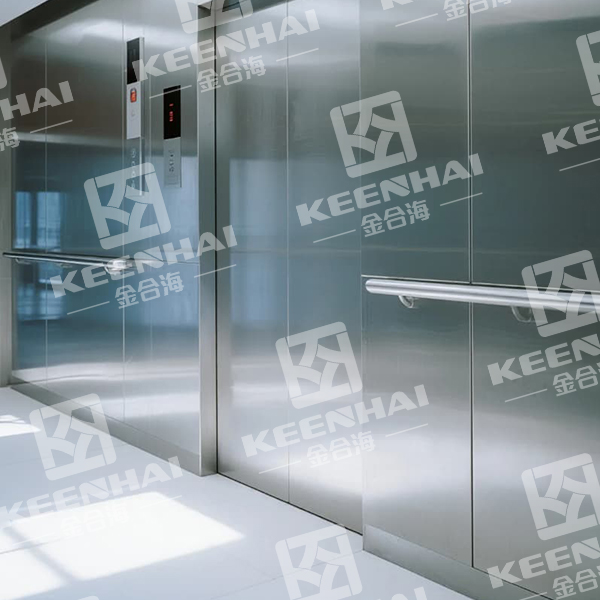PVD stainless steel is a high-performance material where a thin metal layer is vapor-deposited onto steel, creating a durable, scratch-resistant, and colorful finish. Designers use it for interiors, facades, and decorative elements because it combines strength and style, making spaces look premium while withstanding heavy use in hotels, retail, and public areas.
1. Definition and Core Principles
1.1 What PVD Means in Stainless Steel
Physical Vapor Deposition, commonly shortened to PVD, is a high-tech coating method that transforms ordinary stainless steel into a much more versatile surface. In simple terms, a solid material such as titanium, zirconium, or chromium is vaporized inside a vacuum chamber and then deposited onto stainless steel at a molecular level. This fusion creates a thin but extremely strong film that bonds directly with the base metal.
For designers, this is not just a cosmetic finish. The coating enhances both aesthetic variety ug practical durability. You’ll see it used in hotel lobbies, airport terminals, and luxury retail stores, where the demand for long-lasting yet visually striking materials is high. The ability to produce rich colors like gold, bronze, or black without compromising the strength of the substrate makes custom PVD stainless panels a preferred choice in many architectural projects.
1.2 How the Coating Process Works
The PVD process involves several tightly controlled steps:
-
Surface Preparation – The stainless steel substrate is thoroughly cleaned, often with ultrasonic washing and plasma treatment. This ensures the surface is free from dust, oil, or residues that could weaken adhesion.
-
Vacuum Creation – The steel is placed inside a chamber where the air is completely removed. Creating a vacuum is crucial because it prevents contamination during deposition.
-
Target Material Vaporization – A metal such as titanium or zirconium is heated to the point of vaporization using arc discharge or magnetron sputtering. The vapor then travels across the chamber.
-
Deposition and Bonding – The vaporized particles condense onto the stainless steel surface, forming a microscopic layer that is harder than electroplated coatings. This layer integrates into the base metal, which is why it doesn’t peel or flake.
-
Cooling and Stabilization – Finally, the coated steel is cooled and stabilized, leaving a finish that can withstand heavy use in public environments.
To better understand the difference between PVD coating and traditional plating, consider the comparison below:
| Feature | PVD Coating | Electroplating |
|---|---|---|
| Bonding Strength | Molecular-level fusion, highly durable | Surface-level adhesion, prone to peeling |
| Thickness | Ultra-thin (0.25–5 microns) but strong | Thicker but less flexible |
| Color Range | Wide variety (gold, bronze, black, rainbow) | Limited, mostly chrome or nickel |
| Environmental Impact | Eco-friendly, no harmful chemicals | Generates hazardous waste |
| Common Applications | Architectural facades, designer interiors, premium fixtures | Automotive parts, low-cost hardware |
This table highlights why architects often choose PVD-coated architectural stainless steel sheets for walls in projects where both performance and design matter.
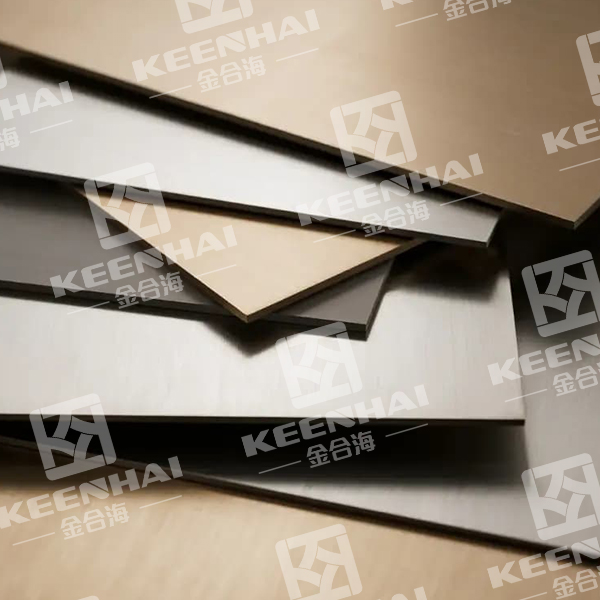
2. Key Material Properties
2.1 Durability and Scratch Resistance
One of the biggest strengths of PVD-coated stainless steel lies in its ability to handle daily wear. The coating creates a dense and extremely hard layer on top of the metal, which makes it far more resistant to scratches compared to untreated steel. For example, when used in luxury hotel lobbies or high-traffic elevators, the panels retain their original finish even after years of constant contact. Designers appreciate this feature because it means less replacement and lower maintenance costs.
To put things into perspective, here’s how PVD-coated steel compares to standard stainless steel sheets:
| Property | PVD-Coated Stainless Steel | Standard Stainless Steel Sheet |
|---|---|---|
| Hardness | High surface hardness (up to 2,500 HV) | Typically around 200 HV |
| Scratch Resistance | Excellent, resists daily abrasion | Moderate, prone to fine scratches |
| Longevity in Public Areas | 10+ years without major wear | 3–5 years before visible dulling |
This difference explains why premium stainless steel sheets in retail stores and airports are often treated with PVD instead of left plain. You’ll notice the shine and smoothness remain consistent even under heavy foot traffic.
2.2 Corrosion Protection
Corrosion resistance is another area where PVD-coated materials stand out. The ultra-thin coating acts as a barrier that shields the underlying steel from water, salt, and cleaning chemicals. Architects often specify this material for seaside hotels or coastal facades because the finish resists rust and discoloration much better than untreated surfaces.
If you’re designing a commercial project in a humid city or near the ocean, this feature is invaluable. The panels not only maintain their structural strength but also keep their visual appeal without frequent replacement. Maintenance teams simply need to wipe the surface with mild detergent instead of applying costly treatments.
2.3 Color and Finish Options
Beyond durability, designers value PVD stainless steel for its wide range of color and texture choices. Instead of being stuck with the classic silver look, you can achieve gold, rose, bronze, or even matte black tones. The process also allows for finishes like mirror polish, brushed, or satin.
1: Start by selecting the base stainless steel grade, usually 304 or 316, depending on exposure to the environment.
2: Decide on the desired finish—mirror polish for a luxury hotel lobby, or brushed for a softer, more industrial feel.
3: Choose the PVD coating color that matches the overall design scheme. For example, black stainless steel sheets pair beautifully with minimalist interiors, while gold tones highlight luxury retail displays.
This variety explains why many designers now choose architectural stainless steel sheets for walls when they want both structural reliability and bold aesthetics. The finishes open up possibilities that traditional stainless steel simply can’t deliver.
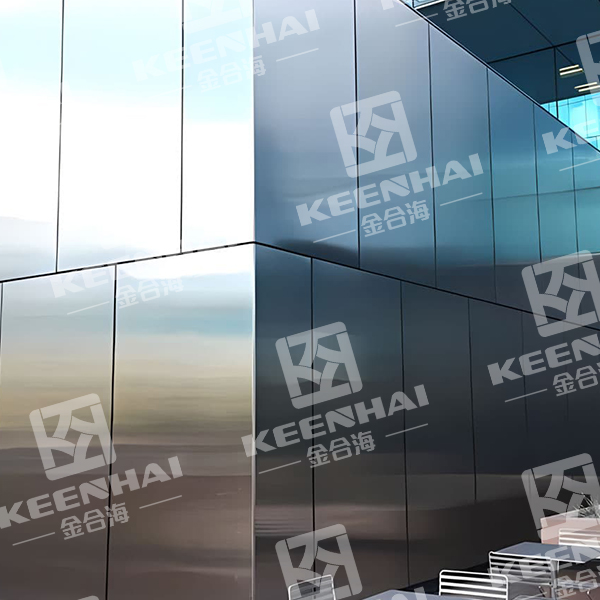
3. Design Applications
3.1 Interior Design and Furniture
In modern interiors, PVD-coated stainless steel has become a go-to choice for designers who want to combine elegance with functionality. You’ll often find it in hotel reception counters, upscale restaurants, and luxury apartments, where materials are expected to handle constant contact without losing their shine. The coating provides not just color but also texture options like brushed, satin, or mirror polish, which allows furniture makers to experiment with light reflection in a space.
For example, a retail boutique might use decorative stainless steel sheets on shelving units or wall panels to create a reflective backdrop for products. The surfaces stay scratch-resistant, even when staff rearrange displays daily. By using this type of material, designers save both time and cost on future refurbishments while elevating the overall customer experience.
3.2 Architectural Cladding and Facades
When it comes to large-scale projects, architects turn to architectural stainless steel sheets for walls because they solve two problems at once: performance and design. The panels act as a protective skin for buildings, while also delivering striking aesthetics. Think about the facades of corporate towers, cultural centers, or luxury malls — those sleek golden or black finishes are usually created through PVD coating.
The difference between PVD cladding and traditional painted aluminum is easy to spot:
| Aspect | PVD Stainless Steel Exterior Wall | Painted Aluminum Panels |
|---|---|---|
| Pagbatok sa Panahon | Withstands humidity, rain, UV rays without fading | Paint chips and fades after a few years |
| Visual Effect | Deep metallic tones, mirror-like reflection possible | Flat colors, limited depth |
| Maintenance Needs | Simple cleaning with water and mild detergent | Requires repainting or recoating |
| Lifespan | 15–20 years with minimal upkeep | 5–10 years before visible wear |
This is why many coastal projects prefer stainless steel sa gawas nga bungbong systems, especially in environments exposed to salt air or high humidity. The material protects the structure while giving designers a chance to play with bold finishes that catch the eye from a distance.
3.3 Decorative Elements in Public Spaces
Public environments such as airports, train stations, and museums demand materials that balance durability with visual appeal. Designers use custom PVD stainless panels for elements like handrails, elevator doors, and ceiling features. The finish resists fingerprints and scratches, which is critical in spaces where thousands of people interact with the surfaces every day.
1: Choose the right stainless grade depending on whether the space is indoors or outdoors.
2: Define the finish that matches the project’s mood — for instance, a brushed bronze surface adds warmth to a gallery entrance, while a black mirrored panel adds drama to a theater lobby.
3: Install the panels with concealed fixing systems, so the decorative surface remains seamless and visually clean.
This approach has been successfully applied in Dubai International Airport, where PVD-coated panels line passenger corridors, creating a bright, futuristic look while still handling the wear of millions of travelers each year. The ability to combine practicality with statement-making design is why these materials dominate high-end public projects worldwide.

4. Design Applications in Architecture & Interiors
4.1 Exterior Cladding and Facades
PVD stainless steel is widely chosen for building facades and exterior cladding because of its weather resistance and luxurious surface finish. When applied properly, it maintains a consistent look even in areas exposed to rain, UV light, and pollution. Designers prefer it for high-end hotels, office towers, and cultural landmarks since it combines aesthetics with structural durability.
4.2 Interior Wall Panels and Ceilings
Inside modern buildings, PVD-coated panels transform ordinary walls and ceilings into reflective, elegant, and durable surfaces. These applications create a sense of spaciousness while keeping maintenance costs low. Because fingerprints and smudges are less visible on textured or matte finishes, they are perfect for public interiors with heavy foot traffic.
4.3 Furniture and Decorative Elements
PVD stainless steel is increasingly applied to tables, shelving units, and decorative trims. To integrate it seamlessly into interior design, professionals usually follow these steps:
1: Select the finish type (mirror, brushed, or matte) that complements the surrounding materials.
2: Match the color tone (such as gold, bronze, or black) to create harmony with wood, glass, or stone.
3: Plan the placement carefully, ensuring reflective surfaces enhance natural or artificial lighting rather than causing glare.
4.4 Elevator Doors and High-Traffic Areas
Elevators, escalators, and lobbies are spaces where durability is as important as aesthetics. PVD stainless steel doors and wall panels resist scratches and fingerprints, while also offering bold design flexibility through varied colors. This makes them an ideal choice for luxury commercial spaces that demand both performance and appearance.
4.5 Signage and Branding Features
Because of its color stability and sleek surface, PVD stainless steel is also widely used in corporate signage, hotel branding, and retail displays. Designers favor it since the finish conveys a sense of premium quality while ensuring that the brand identity remains clear, elegant, and long-lasting.
Ready to specify? See finishes, colors and sheets in our PVD stainless steel products range.











